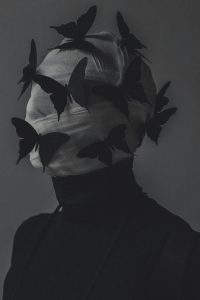 As we approach the centennial of the surrealist movement in 2024, it's an opportune moment to reflect on one of its most profound influences: psychoanalysis. Since its formal establishment in 1924, surrealism has fascinated the world with its dreamlike depictions and exploration of the unconscious, deeply intertwined with psychoanalytic theory. The movement, led by André Breton, drew inspiration from the work of Sigmund Freud and others in the psychoanalytic field, offering a creative playground where dreams, symbols, and unconscious desires could be freely explored.
As we approach the centennial of the surrealist movement in 2024, it's an opportune moment to reflect on one of its most profound influences: psychoanalysis. Since its formal establishment in 1924, surrealism has fascinated the world with its dreamlike depictions and exploration of the unconscious, deeply intertwined with psychoanalytic theory. The movement, led by André Breton, drew inspiration from the work of Sigmund Freud and others in the psychoanalytic field, offering a creative playground where dreams, symbols, and unconscious desires could be freely explored.
In this blog post, we’ll dive into the unique connection between surrealism and psychoanalysis, examining how these two fields continue to shape the way we understand art, thought, and the human mind.
A Century of Surrealism: The Subconscious Mind Takes Central Stage
At its core, both surrealism and psychoanalysis aim to uncover the hidden layers of the human psyche. Freud's pioneering theories about the unconscious mind, especially his work on dream interpretation, had a monumental impact on surrealism. Surrealist artists sought to break away from traditional, rational ways of thinking, using automatic writing, free association, and dream analysis to tap into the unconscious. This shared focus on the mind’s inner workings gave surrealism its distinctive power—art that was both symbolic and raw, deeply emotional yet abstract.
The surrealists, much like psychoanalysts, viewed the unconscious as a realm teeming with repressed desires, fears, and memories that shape human behaviour. Techniques like automatic writing and dream journaling allowed artists and writers to bypass their conscious minds, producing works that felt uncensored and primal. In this, surrealism mirrored Freud’s view that exploring the subconscious would unlock deeper truths about our desires and anxieties.
 Dreams and Symbolism: A Shared Language of the Unconscious
Dreams and Symbolism: A Shared Language of the Unconscious
For both surrealists and psychoanalysts, dreams were key to understanding the mind. Freud described dreams as the "royal road to the unconscious," interpreting them as symbolic representations of hidden desires. Likewise, surrealists saw dreams as a source of creative inspiration, offering imagery that defied logic and rationality yet felt deeply meaningful.
Artists like Salvador Dalí and René Magritte famously incorporated dreamlike imagery into their works, using symbols that echo Freud’s psychoanalytic interpretations. Dalí’s The Persistence of Memory, with its melting clocks and eerie landscapes, can be seen as a visual representation of the fluid, unstable nature of time in dreams, while Magritte’s The Treachery of Images challenges the viewer’s perception of reality itself, questioning the boundaries between the conscious and the unconscious.
Both movements used symbolism extensively, with surrealists often creating strange, uncanny images that evoke a sense of the irrational. Psychoanalysts, in turn, would decode these symbols, viewing them as manifestations of deep-seated desires or conflicts. This exchange of ideas between surrealism and psychoanalysis enriched both fields, providing fertile ground for artistic expression and psychological exploration.
Challenging Reality: The Legacy of Surrealism and Psychoanalysis
One of the most important contributions of both surrealism and psychoanalysis is their shared desire to challenge traditional notions of reality. Freud’s theories showed how the unconscious could manipulate perception, distorting our sense of self and the world around us. Surrealist art took this idea further, questioning the nature of reality itself and embracing the irrational as a legitimate form of truth.
Surrealists were driven by the idea of liberating the mind from the constraints of rational thought. André Breton’s Surrealist Manifesto emphasised the importance of imagination and dreams in breaking free from societal norms, aligning with psychoanalytic theory’s focus on exploring the deeper, hidden aspects of the mind.
As we mark 100 years since surrealism’s founding, we can see how this movement continues to inspire contemporary artists and thinkers. The challenge to conventional reality is just as relevant today as it was in 1924, as artists push boundaries and explore new ways to depict the unconscious.
The Role of Lacan: Psychoanalysis Meets Surrealism
While Sigmund Freud is often regarded as the primary influence on surrealism, the work of Jacques Lacan adds another layer of psychoanalytic insight to the movement. Lacan, whose theories expanded on Freud's ideas, emphasised the role of language and symbols in shaping our perception of reality. His concept of the Mirror Stage, which explores the formation of identity and the fragmentation of self, aligns closely with surrealism’s exploration of distorted perception and fragmented reality.
Lacan’s ideas about desire and lack also resonate with surrealist themes. He argued that human desire is driven by the absence of something unattainable, a notion that echoes surrealist works, which often depict bizarre, dreamlike landscapes that feel incomplete or unresolved. This connection between Lacanian psychoanalysis and surrealism deepens our understanding of how art can capture the elusive and irrational aspects of the human mind.
 Looking Forward: The Enduring Influence of Surrealism and Psychoanalysis
Looking Forward: The Enduring Influence of Surrealism and Psychoanalysis
As we look back on 100 years of surrealism, it’s clear that the movement’s intersection with psychoanalysis has left a lasting mark on both art and psychology. The influence of Freud and Lacan can still be seen in contemporary art, where surrealist techniques and psychoanalytic themes continue to inspire new generations of creators.
Whether through case studies of surrealist artworks viewed through a psychoanalytic lens or by exploring the continued relevance of dream symbolism in modern art, the conversation between surrealism and psychoanalysis is far from over. In fact, this centennial offers a chance to revitalise the discussion and explore how the unconscious continues to shape the creative process today.
In conclusion, as we celebrate a century of surrealism in 2024, we’re reminded of the profound and enduring relationship between surrealism and psychoanalysis. Both fields encourage us to dive deeper into the human mind, to explore our dreams, desires, and fears, and to challenge the boundaries of reality itself. Whether through the lens of Freud’s unconscious mind or Lacan’s mirror stage, surrealism remains a powerful force in contemporary art and thought—one that invites us to embrace the irrational, the dreamlike, and the subconscious in all its complexity.
